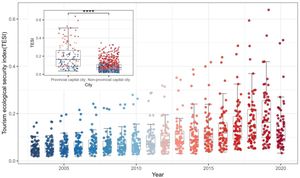RAFAH CROSSING, Egypt – A group of 50 sick and wounded Palestinian children crossed through Gaza’s Rafah crossing to Egypt on Saturday, January 19, 2025, marking the first opening of the border since it was closed by Israeli forces nearly nine months ago. This momentous event highlights the desperate need for medical treatment among Palestinians, particularly children suffering from chronic diseases.
The reopening of the Rafah crossing is tied to a ceasefire agreement reached between Israel and Hamas, which was prompted by the recent release of hostages by Hamas. This adds importance to the crossing, as it is the only gateway for Gaza residents to seek medical care abroad, especially after years of conflict and blockade have weakened health infrastructure.
According to reports from Egypt’s Al-Qahera television, several Palestinian Red Cross ambulances awaited at the crossing. The children, many of whom were visibly injured, were carried out on stretchers and placed carefully on gurneys to be transferred to waiting ambulances on the Egyptian side. The urgency of their transfer to hospitals, particularly to el-Arish, underscored the dire circumstances faced by patients needing immediate medical attention.
Accompanying the 50 young patients were 61 caregivers, emphasizing the reliance on family support for the sick children. The number of evacuees, though welcomed, highlights the overwhelming need for assistance—Gaza’s Health Ministry announced more than 6,000 patients were ready for evacuation and 12,000 were in urgent need of medical services.
"We hope the number will increase,” expressed Mohammed Zaqout, the director of hospitals within Gaza’s Health Ministry, reflecting concern about the limited capacity and the overwhelming demand for service. The bleak reality is exacerbated by the current state of the enclave's health sector, which has suffered devastating impacts from Israel’s extensive military operations during the conflict. Over 110,000 individuals have reportedly been wounded, pushing medical facilities beyond their breaking point.
The Rafah crossing, long considered Gaza’s primary lifeline for those needing urgent medical attention, had been closed since early May 2024, following Israel’s control of the surrounding area during its military operations. This shutdown followed Israel’s 15-month-long military campaign against Hamas, which ramped up after the group attacked southern Israel on October 7, 2023. The crossing’s closure halted many medical evacuations, aggravately obstructing humanitarian assistance.
Efforts to reopen the Rafah crossing have been extensively complicated by security disputes between Israeli, Egyptian, and Palestinian officials. Following the ceasefire deal, Israel consented to reopen the crossing after Hamas liberated the last of its living female captives. Meanwhile, the released Israeli hostages represented another layer of complexity to this narrative, as hundreds of Palestinian detainees were also released, signifying potential steps toward renewed dialogue.
Having previously maintained it under tight security oversight to prevent Hamas from reestablishing military capacities, Israel’s conditions for the Rafah crossing stipulated no PA involvement—despite the past connections. Instead, the crossing will be manned by Palestinian personnel previously affiliated with the PA, albeit without official insignia. This arrangement underlines the continued tensions and the layers of bureaucracy complicate humanitarian efforts.
According to reports, the European Union is set to monitor operations at the Rafah crossing, mirroring its prior role before 2007. EU foreign policy chief Kaja Kallas affirms this mission aims to bolster migration processes during humanitarian crises.
The return of patients through the Rafah crossing is anticipated to be part of regular medical evacuations, driven by overwhelming humanitarian needs. Specialized medical care, including chemotherapy for patients suffering from cancers and life-threatening conditions, remains unavailable within the besieged territory.
Arwa Damon, the founder of the International Network for Aid and Relief Assistance (INARA), describes the evacuation procedures as historically laborious, indicating serious lapses and failures to provide timely medical assistance. "It has always been extraordinarily painful and very slow. Quite simply it has failed to get medical treatment for all those who need it," she remarked, emphasizing the systemic obstacle imposed by the process.
The Rafah crossing’s reopening is of utmost significance, yet it also serves as alarming confirmation of the great suffering still endured by Gazans. This moment brings forth hope but also underlines truths about the dire state of medical services accessible to the population. With the number of patients needing timely interventions far surpassing capacity, local authorities and international aid organizations must navigate complex bureaucratic pathways to mount effective humanitarian responses and sustained medical relief.
This initial group of ambulatory patients is just the beginning; its impact will resonate throughout Gaza as families eagerly follow the developments of future evacuations for continued support. Repairing the health infrastructure and ensuring the health needs of the population remain feasible goals as these first crossings herald potential shifts for Gaza’s beleaguered citizens. The need for immediate and sustained assistance remains imperative as the international community closely monitors the situation.
For many Gazans, this reopening signals the first spark of hope after months of anguish, yet the true challenge lies not just with the crossing’s reopening but with the prioritization of health care amid the reality of prolonged conflict and suffering.



